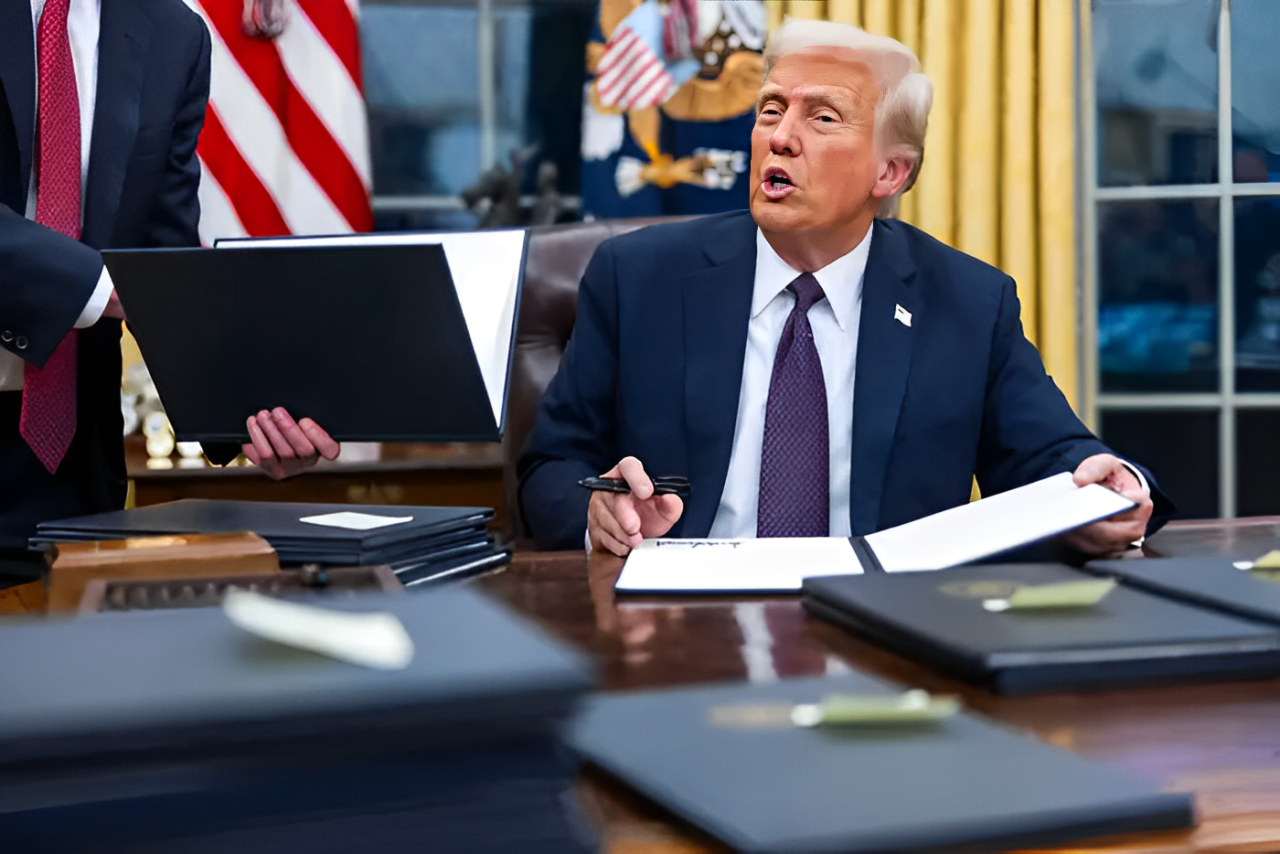President Donald Trump has announced the imposition of a 25% tariff on all steel and aluminium imports into the United States. This decision, unveiled on February 10, 2025, marks a notable escalation in the administration’s trade policy, aiming to bolster domestic industries but raising concerns about potential international trade conflicts.
The White House emphasized that these tariffs are designed to protect national security and revitalize American manufacturing. A fact sheet released by the administration detailed key reforms accompanying the tariffs, including the elimination of alternative agreements, the application of strict “melted and poured” standards to ensure the origin of metals, the expansion of tariffs to include key downstream products, the termination of all general approved exclusions, and a crackdown on tariff misclassification and duty evasion schemes.
This policy shift is reminiscent of actions taken during President Trump’s first term. In March 2018, under Section 232 of the Trade Expansion Act of 1962, the administration imposed a 25% tariff on steel imports and a 10% tariff on aluminum imports, citing national security concerns. While these measures were initially effective in supporting the recovery of the American steel industry and preventing the collapse of the domestic primary aluminum sector, exemptions and loopholes over time allowed for tariff evasion, weakening the program’s effectiveness.
The immediate market response to the new tariffs was mixed. U.S. steel producers experienced a surge in stock prices, with companies like Cleveland-Cliffs, Nucor, and Steel Dynamics seeing significant gains. Conversely, industries reliant on steel and aluminium, such as automotive manufacturers, faced declines due to anticipated increases in production costs. Analysts predict that the tariffs could raise the price of a typical car by approximately $2,000, reflecting a 4% increase, given that steel constitutes about 20% of the cost of heavy machinery like automobiles.
International reactions have been swift and varied. The European Union has expressed strong opposition, warning of potential retaliatory measures. Germany and the EU have cautioned that they may respond in kind, escalating trade tensions.
In the United Kingdom, the government has opted not to join the EU in retaliatory actions, instead seeking to negotiate an exemption from the tariffs. The UK steel industry, which exports about 10% of its products to the U.S., has voiced concerns over the potential “devastating” impact of the tariffs and is urging the government to implement protective measures.
Canada and Mexico, both major suppliers of steel and aluminum to the U.S., are also significantly affected. Canadian Prime Minister Justin Trudeau has expressed strong opposition to the tariffs, warning of a robust response. In previous instances, Canada has implemented retaliatory tariffs on U.S. goods in response to American trade measures.

Economists warn that while the tariffs aim to protect domestic industries, they may lead to higher prices for American consumers and potential disruptions in global supply chains. The U.S. imports around 20% of its steel needs, with significant portions coming from Canada, Brazil, and Mexico. The imposition of tariffs without exceptions or exemptions for allied countries marks a departure from previous trade policies and could strain relationships with key trading partners.
The administration has indicated that future tariffs may be imposed on other sectors, including copper, pharmaceuticals, and computer chips, as part of a broader strategy to reduce reliance on foreign imports and address trade imbalances. This approach aligns with President Trump’s “America First” policy, which emphasizes the protection of domestic industries and the reduction of trade deficits.
As the situation develops, businesses and investors are closely monitoring the potential impacts on the global economy. While some domestic industries may benefit from reduced foreign competition, others that rely on imported materials could face increased costs, which may be passed on to consumers. The possibility of retaliatory tariffs from affected countries adds another layer of uncertainty to the economic landscape.
In summary, the imposition of a 25% tariff on all steel and aluminum imports by the Trump administration represents a significant shift in U.S. trade policy. While intended to protect national security and support domestic industries, the move has sparked concerns about higher consumer prices, strained international relations, and potential retaliatory measures from key trading partners. The full impact of these tariffs will unfold in the coming months as stakeholders across various sectors assess and respond to the changing trade environment.
Disclaimer: This article has been meticulously fact-checked by our team to ensure accuracy and uphold transparency. We strive to deliver trustworthy and dependable content to our readers.








